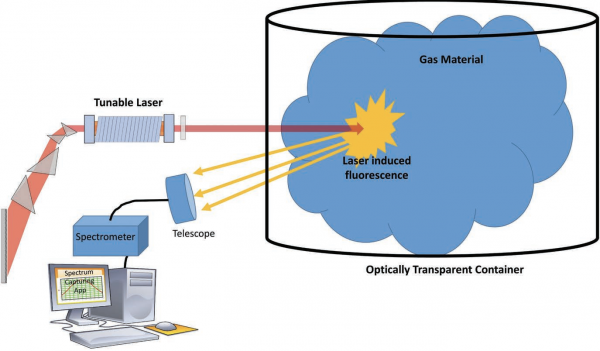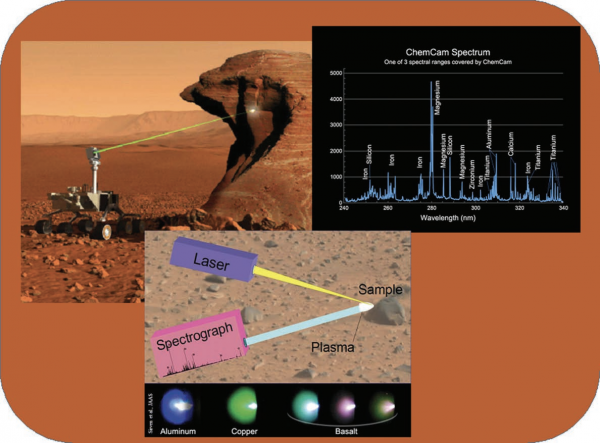How laser can be used as Probes?
Lasers can also be used to probe into materials to determine characteristics of them. Tunable lasers, such as the dye laser, is very useful in probing the absorption, transmission, and fluorescence spectra of materials such as gasses, optically transmissive components, and even of surfaces.
Figure here shows a typical laser spectrometer experiment configuration.

The tunable laser is incident on the subject material to be examined. The laser wavelength is tuned across the spectrum until the subject begins to fluoresce. The fluorescent light is captured by a telescope and directed into a spectrometer for analysis. The concept is quite useful for probing the absorption and fluorescence spectra of materials. This type of probe can also be useful for monitoring smokestacks of manufacturing plants for pollutants, detecting materials in locations that are difficult to place physical devices in, remote detection or early warning of dangerous materials, and many other applications.
Figure below shows a depiction of the NASA Mars Curiosity Probe’s laser induced breakdown spectrometer known as the ChemCam.

This probe uses a high-energy laser (HEL) pulse to ionize materials. As those materials are ionized, they fluoresce with a particular spectrum based on their composition. This device then enables the planetary scientist to study what the Martian soil and rocks are made of.
There are many types of laser probes. Some probe beams are used to deter mine the amplification saturation levels inside an active gain medium. Some laser probes are used to measure reflectance and/or absorption of surface materials. Some laser probes measure optical properties of materials such as optical density, birefringence, polarization, index of refraction, biological activity, electromagnetic properties, molecular and atomic properties, and many more. The potential for laser beams to be used to probe unknown parameters for scientific research is practically unlimited.
